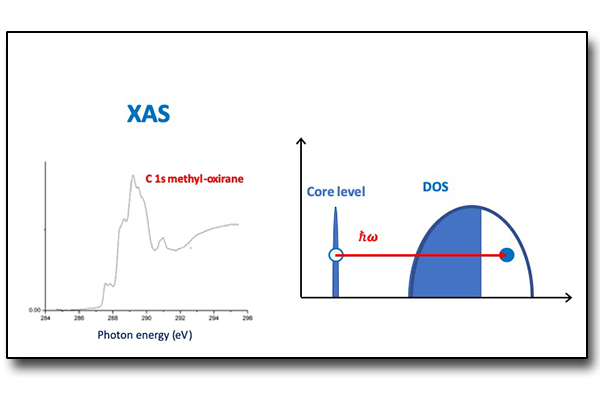X-Ray Absorbtion Spectroscopy (XAS) is the extension of optical spectroscopy in the X-ray range. The X-ray energy range corresponds with the excitation of the core levels; due to the localized character of the core electron wave function the spectroscopic information is projected on the absorbing atom. Moreover, considering a single particle picture, since the core level has a sharp definition in energy and angular momentum, the XAS is proportional to the empty density of states projected on the absorbing atom and on the angular momentum l=±1, where l is the angular momentum of the core level. When this picture is no longer valid, i.e. effect of electron correlation are present, the interpretation of the spectra is closer to atomic-like multiplets.
The main advantage of XAS with respect to optical absorption is the chemical sensitivity via core level excitation. Soft X-ray Absorption is particularly suitable for C 1s, L2,3 of transition metals and M4,5 of rare-earths.
XAS display a great flexibility of experimental setups: it can be performed detecting transmitted photons, total and partial electron yield, fluorescence. For soft-X-rays the electron de-excitation channel is more efficient than the fluorescence mode.
Moreover, the direction of the linear polarization of the X-ray radiation with respect to the sample can give rise to change in the spectra by selection rules related to the dipole matrix element. This dependence is sensitive to anisotropy of charge and spin.


 English (UK)
English (UK)  Italiano (Italia)
Italiano (Italia)